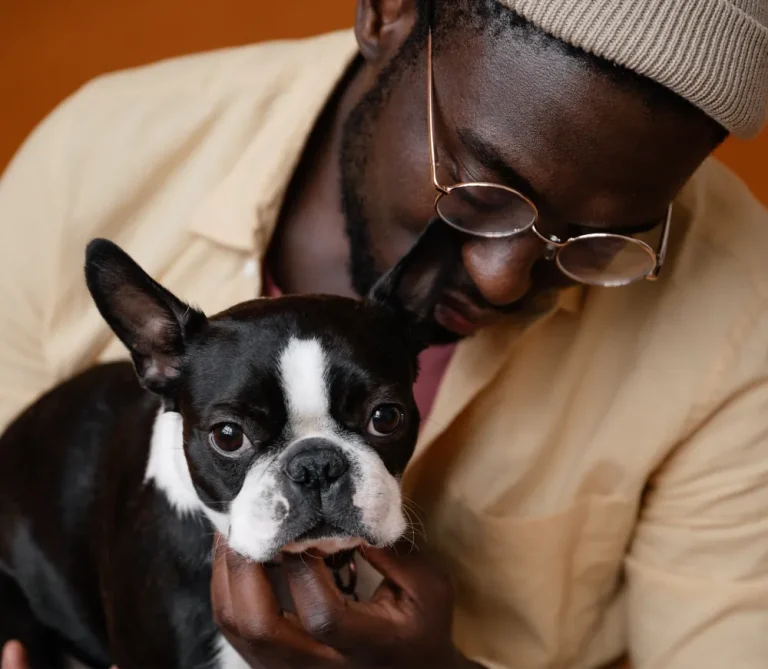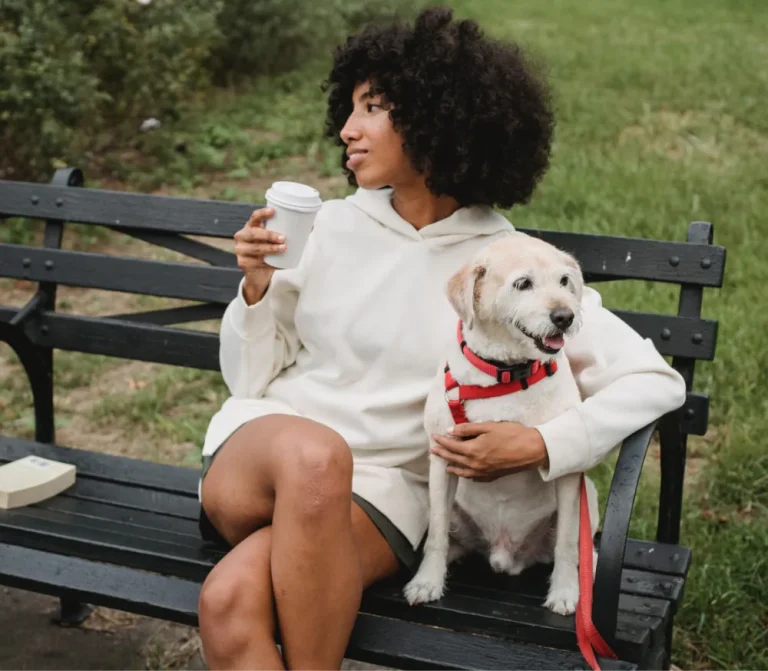
When it comes to walking your dog, there are two primary considerations: comfort and control. While a collar is often the go-to option, a harness is becoming an increasingly popular choice for dog owners looking for a safer and more comfortable alternative, particularly for puppies and small breeds. The right harness can provide better control, reduce strain on your dog’s neck, and make walks more enjoyable for both of you. But with so many different harness styles available, how do you choose the best one for your pup?
In this blog, we’ll walk you through the various types of dog harnesses, their benefits, and how to select the perfect one for your dog based on their size, behavior, and needs.
1. Understanding the Different Types of Dog Harnesses
Each harness type is designed with specific needs in mind, so it’s important to understand the differences before making a purchase. Here are the most common types:
A. Back-Clip Harnesses (Standard Harness)
The back-clip harness is the most common style of harness. It features a D-ring located on the back of the harness where the leash attaches. This type of harness is ideal for dogs who already have basic leash training and don’t pull excessively.
- Best For: Well-behaved dogs, puppies, and dogs who don’t tend to pull while walking.
- Benefits: Provides comfort without restricting your dog’s natural movement. It’s simple to put on and take off, making it perfect for everyday walks.
B. Front-Clip Harnesses (No-Pull Harnesses)
Front-clip harnesses are designed with a leash attachment point at the front of the chest. This configuration helps redirect your dog’s attention when they pull, making it an effective choice for dogs that tend to tug or lunge during walks.
- Best For: Dogs that pull excessively on walks or need more control during training.
- Benefits: Helps stop pulling behavior by redirecting your dog’s movement toward you. It’s perfect for training, as it discourages pulling without causing discomfort.
C. Dual-Clip Harnesses
Dual-clip harnesses combine the best of both worlds by offering both front and back leash attachment points. This versatility makes them ideal for dogs who may need a mix of training control and casual walking comfort.
- Best For: Dogs in training, dogs who alternate between pulling and non-pulling behaviors, or those with specific health conditions.
- Benefits: Provides flexibility for different walking scenarios. The front clip is perfect for training walks, while the back clip is great for casual strolls.
D. Step-In Harnesses
Step-in harnesses are easy to use and are designed for dogs that don’t mind stepping into the harness rather than having it pulled over their head. They often feature soft, breathable material and are great for dogs with short necks or smaller breeds.
- Best For: Small dogs, dogs that are sensitive to having things placed over their head, and dogs who are new to harnesses and need something simple.
- Benefits: Easy to put on and take off, comfortable, and often made with lightweight, breathable materials. These harnesses distribute pressure evenly across your dog’s body, ensuring comfort on long walks.
E. Vest Harnesses
Vest-style harnesses are designed to wrap around your dog’s body like a vest, providing more coverage than other types of harnesses. They are often padded and offer extra comfort and support, which is perfect for dogs who may have sensitive skin or health issues.
- Best For: Small breeds, elderly dogs, or dogs with joint problems.
- Benefits: Provides even pressure distribution across the chest and shoulders, making it a good option for dogs with breathing issues, chest problems, or those who experience discomfort with other types of harnesses.
2. Key Considerations for Choosing the Right Harness for Your Dog
Once you’ve identified the type of harness that suits your pup’s needs, it’s important to consider several other factors to ensure the harness will be a good fit:
A. Size and Fit
A well-fitting harness is crucial for comfort and control. If the harness is too tight, it can restrict your dog’s movement or cause chafing. If it’s too loose, it could slip off or cause your dog to pull more than they should.
- Measure Your Dog: To find the right size, measure your dog’s girth (the circumference of their chest just behind the front legs) and neck. Use these measurements to consult the manufacturer’s sizing chart and ensure the harness fits snugly but comfortably.
- Adjustable Straps: Look for a harness that has adjustable straps to accommodate your dog’s growth and ensure a proper fit over time.
B. Comfort
Comfort is key when choosing a harness for your dog. A harness that is too rigid or made from harsh materials can irritate your dog’s skin and lead to discomfort during walks. Soft, padded materials are ideal for providing comfort without sacrificing control.
- Padding and Breathability: Harnesses with extra padding, especially around the chest and neck areas, will reduce the risk of chafing and rubbing. Mesh or breathable fabrics are also good options for warmer weather, as they prevent overheating.
- Weight and Material: If you have a small breed or senior dog, make sure the harness is lightweight to avoid putting unnecessary strain on their body. Look for materials that are gentle and soft, such as nylon or cotton.
C. Durability and Safety
The durability of the harness will be especially important if you have an active dog that loves outdoor adventures. Choose a harness made from strong, high-quality materials that can withstand daily wear and tear, especially if your dog tends to pull on walks.
- Reflective Features: Look for harnesses with reflective strips for nighttime visibility, keeping your dog safe during evening walks.
- Reinforced D-Rings: Ensure the harness features a sturdy D-ring for the leash attachment. Reinforced D-rings are less likely to break under pressure, especially if your dog pulls or tugs.
3. When to Consider Switching Harnesses
As your dog matures and their behavior changes, you might need to switch to a different type of harness. Here are some scenarios where switching harnesses might be necessary:
A. Puppy to Adult Dog Transition
When your puppy grows into an adult dog, they might become stronger and more independent. You may find that the harness that worked in their puppyhood no longer offers enough control. This is a great time to upgrade to a front-clip or dual-clip harness to help manage pulling and guide them during walks.
B. Addressing Behavioral Issues
If your dog has developed bad walking habits, such as excessive pulling, lunging, or anxiety, switching to a more suitable harness can help address these behaviors. A no-pull harness or a dual-clip harness is designed to reduce pulling, while a vest-style harness can offer a calming effect for anxious dogs.
C. Adjusting to Senior Dogs’ Needs
As your dog ages, they may develop health problems such as arthritis or joint pain. Switching to a more comfortable harness, such as a padded or soft vest harness, can alleviate pressure on their body and provide more support during walks.
4. How to Train Your Dog to Wear a Harness
If your dog is new to wearing a harness, it might take a little time and patience to get them comfortable. Here are some tips for training your dog to wear a harness:
A. Start Slowly
Begin by introducing the harness to your dog in a positive, non-stressful environment. Let them sniff it and get used to the sight of it before putting it on. Gradually work up to placing the harness on your dog for short periods of time before attaching a leash.
B. Use Positive Reinforcement
Reward your dog with treats and praise every time they tolerate the harness being put on, especially when they walk comfortably while wearing it. This positive reinforcement will help them associate the harness with good things.
C. Gradual Walks
Once your dog is comfortable wearing the harness around the house, start with short walks in a quiet area before progressing to longer outings. This gradual approach will help them adjust to the sensation of being harnessed and ensure they enjoy their walks.
Conclusion: Finding the Perfect Harness for Your Pup
Choosing the right harness for your dog is a crucial step in making walks more enjoyable and comfortable for both of you. By considering your dog’s size, age, behavior, and comfort preferences, you can select the ideal harness that provides the right balance of control and freedom.
Remember, the perfect harness will not only make walks easier but will also help strengthen the bond between you and your pup. Whether you’re training a new puppy or supporting an active adult dog, the right harness will give your dog the comfort and control they need to enjoy each walk to the fullest.



